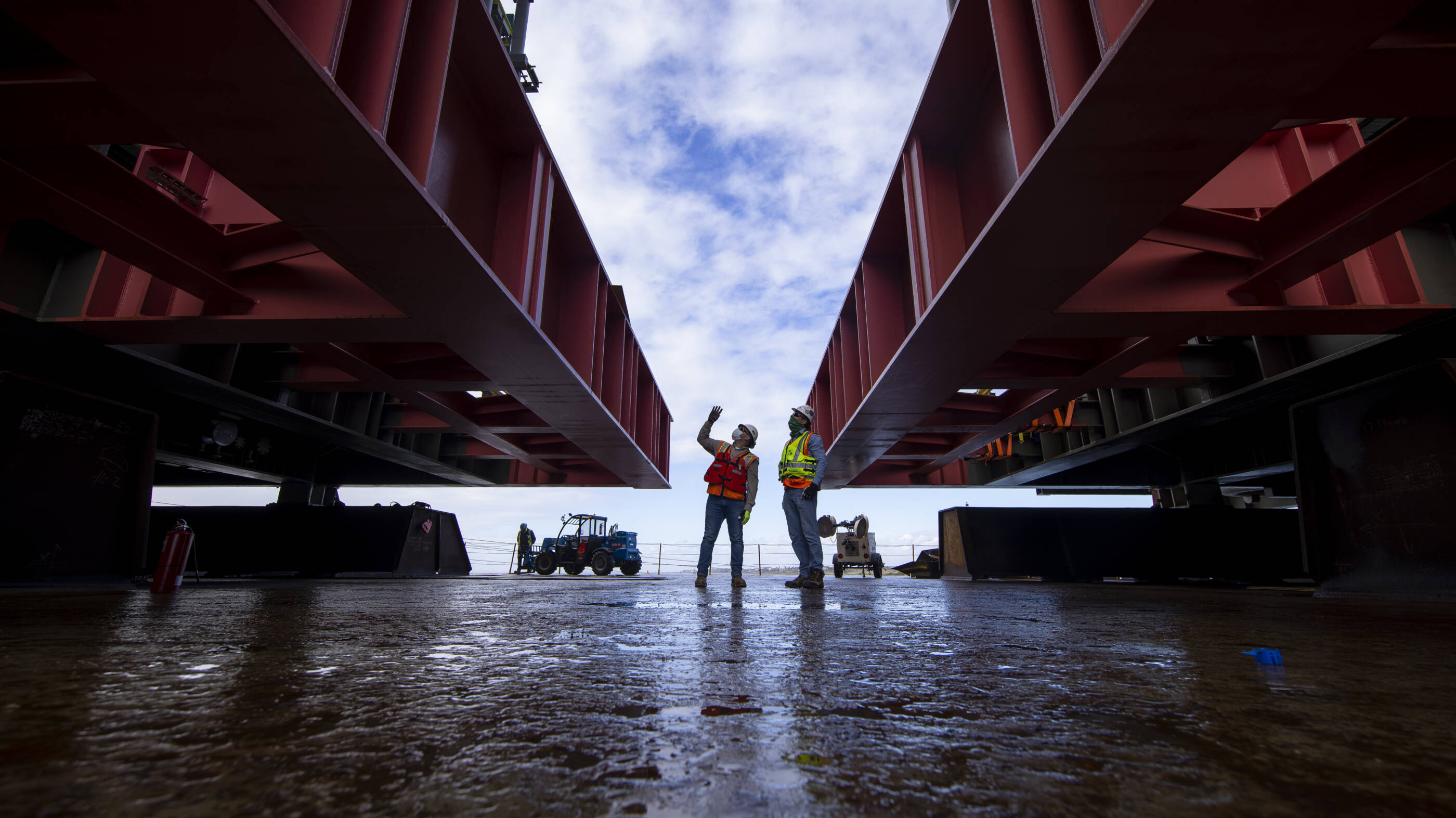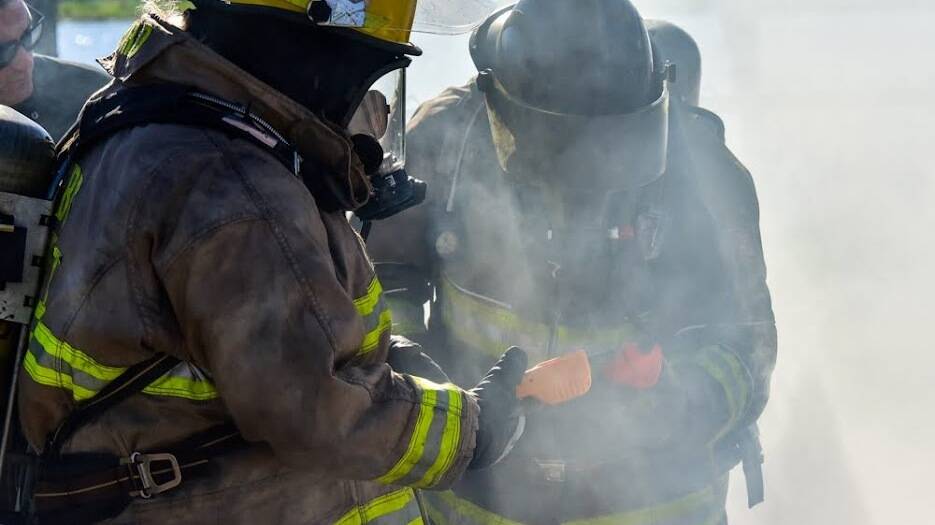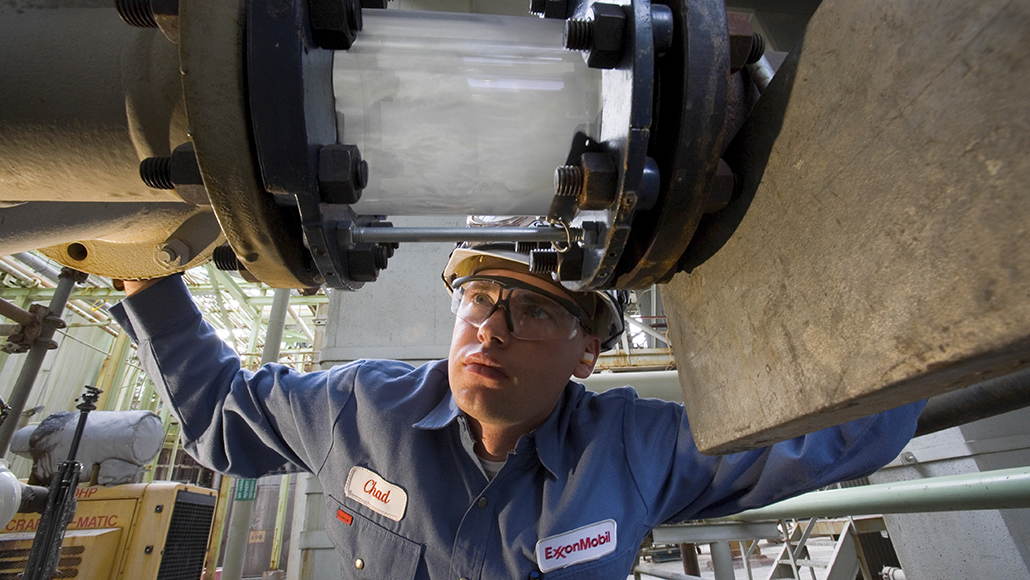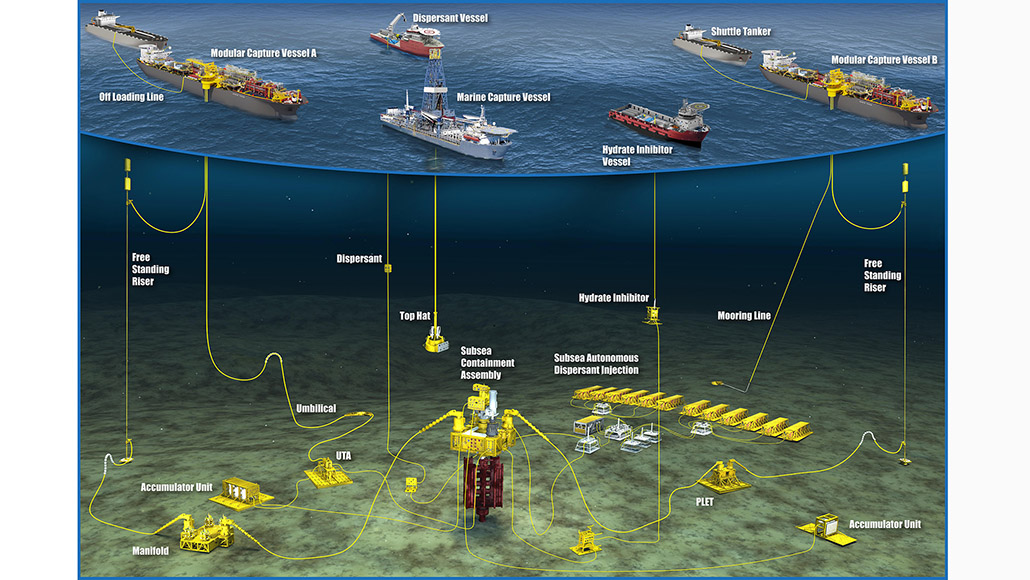selected item
Treating spills with dispersants allows microbes to naturally break down crude oil
Spilled oil tends to float on the surface of water in slicks. Treating a spill with dispersants allows very small droplets of oil to form, which then become distributed and diluted below the water's surface. This enhances the access of microbes to the oil, thus increasing the rate of degradation.
While the benefits of using dispersants have been questioned by stakeholders concerned about their chemical composition, studies have shown that dispersants are less toxic than oil, and dispersed oil breaks down faster than undispersed oil. When used appropriately, modern dispersants have low environmental and human-health risk. For example, an Environment Canada study found a common dish soap to be 25 times more toxic to rainbow trout than a common dispersant. In its 2005 report on modern dispersants and associated effects, the National Research Council stated that the toxicity of dispersed oil results primarily from the oil itself, and not from the dispersants.
The dispersants developed by ExxonMobil contain ingredients that are used safely in a variety of consumer products, such as skin creams, cosmetics, and mouthwash. We continue to advance dispersant technology and have developed a new dispersant gel that could further reduce concerns about adding chemicals to the environment. This new gel can treat the same amount of oil with two-thirds less chemical volume than other dispersants. If final product stability tests are successful, we expect commercialization of this new dispersant in 2011.
Related content

Emergency preparedness

Real-life training to keep you safe
Key takeaways:
- We sponsor hands-on emergency pipeline safety training for local first responders.
- We’ve adapted the program to include training for carbon dioxide (CO2) pipeline emergencies.
- We offer the training to first responders across our pipeline and operations footprint – helping to keep communities safe.
3 min read
• May 13, 2024
Management systems, standards and controls
At ExxonMobil, we believe that it is possible to obtain the energy the world needs while also protecting people and the environment.
Operations Integrity Management System
ExxonMobil is committed to conducting business in a manner that is compatible with the environmental and economic needs of the communities in which we operate, and that protects the safety, security and health of our employees, those involved with our operations, our customers and the public.ExxonMobil's Culture of Health
At ExxonMobil, we prioritize employee health and total well-being. Our Culture of Health (CoH) Mission is to improve the health, well-being and productivity of employees by creating a work environment that actively and consistently promotes and supports healthy behaviors in all aspects of life.